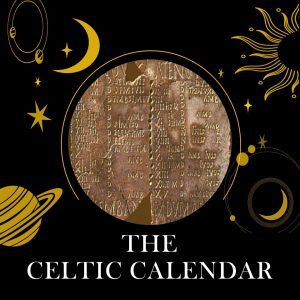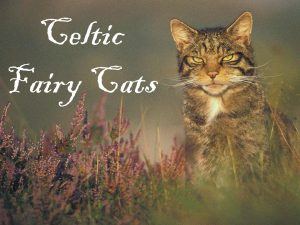 Judging from social media and the commercials on TV, one would assume that pumpkin spice is as American as apple pie. That may be true, but not in the way you think. The spices for both apple and pumpkin pie originated in the Spice Islands, which are about as far from America as you can get.
Judging from social media and the commercials on TV, one would assume that pumpkin spice is as American as apple pie. That may be true, but not in the way you think. The spices for both apple and pumpkin pie originated in the Spice Islands, which are about as far from America as you can get.
The Maluku Islands are an archipelago in the eastern part of Indonesia, meaning they are chains and clusters of islands that are grouped fairly close together. The islands were known as the Spice Islands because nutmeg, mace, and clove are exclusively found there, the presence of which sparked colonial European trade interests. But spice trade did not begin with the Europeans.
The maritime spice trade was dominated by Indonesian sailors who established routes from southeast Asia to Sri Lanka and India by 1500 BCE. The Aksumite Empire established the Red Sea route prior to the 1st century CE. Indian and Persian traders also transported spices overland towards the Mediterranean and the Greco-Roman world via the incense route and the Silk Road. Thus, spices such as cinnamon, cardamom, ginger, pepper, nutmeg, clove, and turmeric were well known in antiquity and had found their way into the Near East well before the rise of Christianity.
During the Crusades (11th to 15th centuries), the Italian maritime republics monopolized the trade between Europe and Asia. The trade routes changed again in 1498 when the Portuguese successfully navigated around the Cape of Good Hope. This route, which drove world trade from the Middle Ages to the Renaissance ushered in an age of European domination in the East.
Spain was among the many countries seeking to find faster routes to the Spice Islands. Christopher Columbus wrote the Florentine astronomer, Pabolo dal Pozzo Toscanelli in 1481 about the possibility of a westward route. Toscanelli not only encouraged the plan but provided a copy of a map implying that a westward route to Asia was possible. However, it was not until 1492 that Columbus garnered support for his expedition from King Ferdinand and Queen Isabella of Spain and set off on his voyage across the Atlantic in search of gold, spices, and a safer route to the East.
On October 12, 1492, Columbus’s ships made landfall in the Americas. His landing place was in the Bahamas’s. Believing himself to be in India, he dubbed the indigenous population Los Indios (Spanish for “Indians”). From there he visited the islands now known as Cuba and Hispaniola, and established a colony in what is now Haiti. Thus, it is Christopher Columbus’s failed circumnavigation attempts that lead to America’s connection to pumpkin spice.
See popular spice blends below. Continue reading

 Did you know that Christianity’s stance on abortion has changed over time? Attitudes regarding sexuality and childbirth were markedly different in the past. Hagiographical texts even hold accounts saints performing abortions.
Did you know that Christianity’s stance on abortion has changed over time? Attitudes regarding sexuality and childbirth were markedly different in the past. Hagiographical texts even hold accounts saints performing abortions. I’m a passionate person—some of my passions include history, reading/writing, and cooking. In my opinion, life’s even better when those passions can be combined.
I’m a passionate person—some of my passions include history, reading/writing, and cooking. In my opinion, life’s even better when those passions can be combined.
 Writers need all kinds of tools to craft believable stories. One of my favorite facets of research for my books was learning about period cooking. To that end, I even purchased a cookbook written by archeologists who reconstructed recipes based off the remnants of food found near cooking fires.
Writers need all kinds of tools to craft believable stories. One of my favorite facets of research for my books was learning about period cooking. To that end, I even purchased a cookbook written by archeologists who reconstructed recipes based off the remnants of food found near cooking fires. As early as the neolithic era, humans sought ways to mark the passage of time and predict celestial events. Their methods, no matter how carefully thought-out, were often thwarted by the very solar and lunar cycles they wished to track. When seasonal drift occurred and the months no longer aligned with the weather, people simply adjusted the calendar or adopted an entirely new one.
As early as the neolithic era, humans sought ways to mark the passage of time and predict celestial events. Their methods, no matter how carefully thought-out, were often thwarted by the very solar and lunar cycles they wished to track. When seasonal drift occurred and the months no longer aligned with the weather, people simply adjusted the calendar or adopted an entirely new one. The month of July is often referred to as the month of the Thunder Moon. Celts venerated all natural phenomena, so it’s not surprising that they had a thunder god. Taranis, whose name literally means thunderer, is that god.
The month of July is often referred to as the month of the Thunder Moon. Celts venerated all natural phenomena, so it’s not surprising that they had a thunder god. Taranis, whose name literally means thunderer, is that god. I’m in the process of putting in a fairy garden. At the outset, I did not realize it would be a multi-year process.
I’m in the process of putting in a fairy garden. At the outset, I did not realize it would be a multi-year process. The Ostara Sabbat marks the end of the dark half of the year. In the Anglo-Saxon calendar, Eostremonath was named after Eostre (Ostara in Old High German). Eostre is maiden goddess of dawn and the spring. At the equinox a feast is celebrated in her honor, replete with offerings of colored eggs. Exchanging eggs was thought to ensure abundant crops in the coming autumn and Saxons exchanged colored eggs as a talisman representing new life. The eggs were consumed in Eostre’s honor.
The Ostara Sabbat marks the end of the dark half of the year. In the Anglo-Saxon calendar, Eostremonath was named after Eostre (Ostara in Old High German). Eostre is maiden goddess of dawn and the spring. At the equinox a feast is celebrated in her honor, replete with offerings of colored eggs. Exchanging eggs was thought to ensure abundant crops in the coming autumn and Saxons exchanged colored eggs as a talisman representing new life. The eggs were consumed in Eostre’s honor. I just launched Klara’s Journey on Kickstarter! On the Kickstarter website you’ll find:
I just launched Klara’s Journey on Kickstarter! On the Kickstarter website you’ll find: